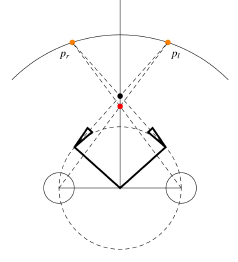Analysis of Disparity Distortions in Omnistereoscopic Displays
journal » TAPmichael-langer , Sébastien Roy , Vincent Chapdelaine-Couture
Tags: environnement immersif , perception , stéréo
Date : 2010-07
Abstract
 An omnistereoscopic image is a pair of panoramic images that enables stereoscopic depth perception all around an observer. An omnistereo projection on a cylindrical display does not require tracking of the observer’s viewing direction. However, such a display introduces stereo distortions. In this article, we investigate two projection models for rendering 3D scenes in omnistereo. The first is designed to give zero disparity errors at the center of the visual field. The second is the well-known slit-camera model. For both models, disparity errors are shown to increase gradually in the periphery, as visual stereo acuity decreases. We use available data on human stereoscopic acuity limits to argue that depth distortions caused by these models are so small that they cannot be perceived.
An omnistereoscopic image is a pair of panoramic images that enables stereoscopic depth perception all around an observer. An omnistereo projection on a cylindrical display does not require tracking of the observer’s viewing direction. However, such a display introduces stereo distortions. In this article, we investigate two projection models for rendering 3D scenes in omnistereo. The first is designed to give zero disparity errors at the center of the visual field. The second is the well-known slit-camera model. For both models, disparity errors are shown to increase gradually in the periphery, as visual stereo acuity decreases. We use available data on human stereoscopic acuity limits to argue that depth distortions caused by these models are so small that they cannot be perceived.